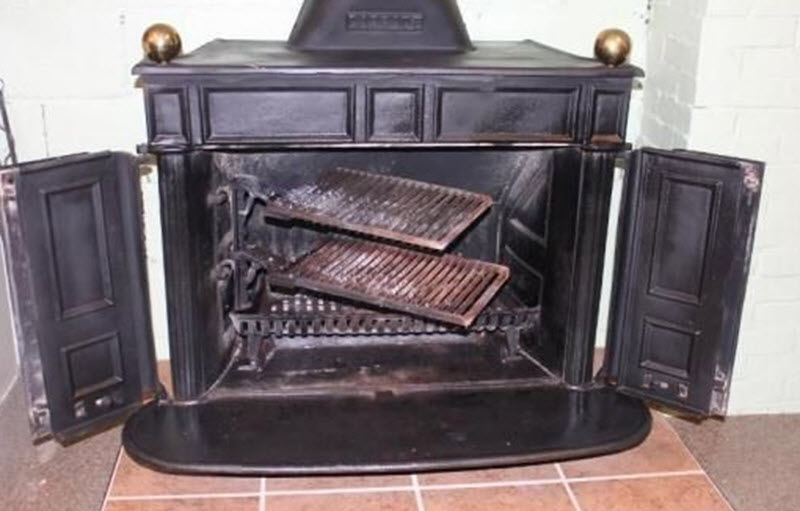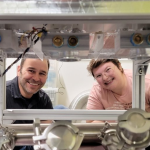The Franklin stove stands as one of the remarkable inventions by Benjamin Franklin, designed to revolutionize heating during the harsh winters of the 18th century. This innovative stove not only offered greater warmth but also represented a significant step in historical technology and climate adaptation. In her book, Joyce Chaplin delves into Franklin’s vision, linking the stove to larger atmospheric phenomena, including the Gulf Stream that he famously mapped. As colonists faced the brutally cold winters, their need for efficient heating spurred Franklin’s ingenuity, showcasing how one invention can lead to broader scientific explorations. Understanding this context allows us to appreciate the interplay between historical inventions and their lasting impact on society and climate resilience.
Also referred to as the Pennsylvania fireplace, the Franklin stove highlights how innovative heating solutions emerged in response to environmental challenges of the time. Invented by the famed American polymath Benjamin Franklin, this groundbreaking device symbolizes a pivotal moment in energy efficiency and comfort during extreme weather conditions. Joyce Chaplin’s exploration of this invention sheds light on its role in addressing not just heating needs but also its implications for broader scientific inquiry regarding atmospheric systems. By tackling the prevalent cold, Franklin’s invention ultimately intertwined the realms of practical improvements and theoretical advancements in the understanding of natural phenomena. Such technological breakthroughs are vital as we reflect on the historical evolution of technology and its relevance in contemporary climate discussions.
The Innovations of Benjamin Franklin: More Than Just a Stove
Benjamin Franklin is often celebrated for his remarkable contributions to science and politics, but one of his most impactful inventions remains relatively obscure: the Franklin stove. This innovative design revolutionized home heating during the 18th century, particularly in the context of the Little Ice Age, when frigid temperatures gripped major cities. By creating a more efficient heating source, Franklin provided a practical solution that allowed families to stay warm while using less fuel—a concept that reflected a significant leap forward in climate adaptation and resourcefulness during challenging times.
Franklin’s stove epitomizes the intersection of historical technology and ingenuity, reflecting a period when settlers faced not only harsh winters but also the broader implications of environmental change. Historian Joyce Chaplin, in her insightful analysis, illustrates how Franklin’s work transcended mere warming of homes. It signified a deeper understanding of atmospheric phenomena, laying groundwork for future climatic studies. The stove’s design, which allowed for better air circulation, showcases Franklin’s innovative spirit and his expectation that science could lead to a more comfortable and sustainable living.
Climate Adaptation Through Invention
Franklin’s creation of the stove was not merely an act of invention; it represented a proactive response to climate adaptation. The harsh winter of 1740-41 underscored the urgency for settlers to devise effective methods to cope with extreme weather conditions. By enhancing the heating efficiency of traditional fireplaces, Franklin’s design significantly lessened the amount of wood required for fuel, simultaneously addressing deforestation concerns brought about by increasing settlement. Each iteration of the stove reflected Franklin’s ability to adapt to and even anticipate the challenges posed by climate extremes.
Additionally, Chaplin’s exploration into the environmental impacts of Franklin’s inventions highlights the importance of sustainable solutions. As Franklin recognized the detrimental effects of rapid urbanization and deforestation, his efforts in creating the stove demonstrated a forward-thinking approach to living harmoniously with nature. This mindset echoes modern sustainability initiatives, where understanding our environmental footprint is crucial in developing technologies that contribute positively to climate resilience.
Exploring the Mechanics of the Atmosphere: Franklin’s Contributions
The legacy of Benjamin Franklin is deeply intertwined with his fascination for the natural sciences, particularly his investigations into atmospheric phenomena. The design of the Franklin stove exemplifies his understanding of convection and air dynamics. By engineering a device that capitalized on warm air rising, he was able to create a more effective heating solution. This practical application of scientific principles not only made homes more comfortable but also contributed to the broader narrative of understanding weather patterns and atmospheric behaviors that continue to be relevant today.
Chaplin’s book delves into how Franklin’s empirical approach paved the way for studying complex phenomena like the Gulf Stream. This link between heating technologies and atmospheric science illuminates the broader implications of technological advancement in relation to environmental understanding. By mapping such dynamics, Franklin transformed home heating into a lesson about interconnectedness—underscoring how human innovation can shed light on natural processes.
The Social Context of Franklin’s Inventions
While Benjamin Franklin is revered for his inventions and scientific contributions, his historical context reveals a more complex figure. Joyce Chaplin’s research emphasizes the socio-economic backdrop against which Franklin invented his stove, particularly regarding slavery and labor practices. Records indicate that the Pennsylvania iron industry, within which Franklin operated, exploited enslaved laborers. This aspect highlights a darker side of innovation, prompting discussions about the ethical implications of technological advancements and their entanglement with societal injustices.
Understanding Franklin’s engagement with the socio-political realities of his time encourages a reevaluation of his legacy. Although he advocated for abolition later in life, his financial gains from the construction of stoves and other inventions were inextricably linked to an economy reliant on slavery. Chaplin’s narrative invites readers to consider how technological progress coexisted with, and was sometimes dependent upon, systemic inequalities—an important reflection in today’s discussions regarding the intersection of innovation and social justice.
Franklin’s Vision for a Cleaner Future
Among Franklin’s myriad contributions to society, his efforts to mitigate air pollution through improved design of the stove stand out as an early recognition of environmental health. Concerned by the smoke produced in urban settings, he sought to create a model that recycled fumes back into fuel, enhancing efficiency while reducing harmful emissions. This innovative thinking foreshadows modern advancements in eco-friendly technology, where minimizing waste and improving air quality have become paramount goals.
Joyce Chaplin elaborates that Franklin’s approach to creating a cleaner environment was deeply connected to his disdain for the polluted atmosphere in cities like London. His insistence on reducing smoke emissions and harnessing waste reflects a profound understanding of public health and environmental interdependence. By establishing these principles in the 18th century, Franklin laid the foundation for ongoing discussions about sustainability and the role of technology in reshaping our world for the better.
The Cultural Impact of the Franklin Stove
The cultural influence of the Franklin stove extends beyond its functionality as a heating device; it symbolizes an American spirit of innovation and resilience. As settlers navigated the challenges of the Little Ice Age, the stove emerged as not only a tool for comfort but also a beacon of hope and adaptability. Today, this pioneering invention reminds us of the critical role technology plays in our daily lives and its potential to respond to environmental challenges.
Chaplin emphasizes that the adoption of the Franklin stove was more than a matter of convenience; it represented a shift in cultural values towards prioritizing comfort and scientific inquiry. This evolution in mindset can be seen today, as we grapple with current environmental crises. The cultural legacy of Franklin’s inventions serves as a reminder that innovation can address both immediate needs and long-term sustainability goals, fostering a heritage of problem-solving and adaptive thinking.
Lessons from Franklin for Modern Climate Challenges
As we face unprecedented climate challenges today, Franklin’s vision for innovation offers valuable lessons. Chaplin argues that his multifaceted approach to addressing environmental issues foreshadows modern strategies for combating climate change. The notion of pursuing diverse solutions, rather than searching for a singular fix, resonates in contemporary discussions on environmental policy and technology. Franklin’s legacy teaches us to embrace a collaborative mindset, where various innovations work in concert to tackle complex problems.
Moreover, the adaptability inherent in Franklin’s inventions encourages us to stay resilient in the face of adversity. Just as the Franklin stove emerged from a historical context of extreme weather, modern innovations must arise in response to the realities of today’s climate emergencies. By learning from Franklin, we can foster a spirit of creativity and interdisciplinary collaboration that encourages a sustainable future for generations to come.
The Evolution of Heating Technologies: From Franklin to Today
The journey of heating technologies since Franklin’s era illustrates a steady evolution reflecting advances in science and environmental awareness. The Franklin stove set a new standard at its inception, laying foundational principles for future innovations in residential heating. Its design and efficiency encouraged a paradigm shift towards more sustainable heating methods, influencing countless generations of engineers and inventors who sought to further refine heating technologies.
Today, as we confront climate change, the evolution of these technologies is more crucial than ever. Innovations inspired by Franklin’s work continue to shape our approach to heating and energy consumption. Modern advancements prioritize efficiency and aim to reduce the carbon footprint associated with traditional heating methods, illustrating how historical inventions can inform contemporary practices and lead us towards a greener future.
Joyce Chaplin’s Examination of Franklin’s Legacy
Joyce Chaplin’s examination of Franklin in her book not only highlights the inventor’s contributions but also offers a critical lens through which we can better understand his complex legacy. In shedding light on the Franklin stove, she reveals how one man’s innovation can affect societal dynamics on multiple levels—from comfort in the home to broader discussions of ethics and environmental stewardship. This multifaceted exploration encourages readers to consider the implications of Franklin as an inventor beyond his most recognized contributions.
Through her meticulous research, Chaplin invites a nuanced discourse on Franklin’s role in shaping American culture and technology. By contextualizing his inventions within the socio-political framework of the 18th century, she provides insight into how historical technology like the Franklin stove can inform current dialogues surrounding innovation, legacy, and ethical responsibility, thereby enriching our understanding of the past and its continuity in the present.
Frequently Asked Questions
What is the Franklin stove and how did it connect to Benjamin Franklin’s inventions?
The Franklin stove is a revolutionary heating device invented by Benjamin Franklin in the 18th century. This innovative stove was designed as a solution to the harsh winter conditions experienced during the Little Ice Age, showcasing Franklin’s commitment to climate adaptation. By improving heating efficiency, the Franklin stove helped households use less wood while providing greater warmth than traditional fireplaces.
How did Joyce Chaplin’s book highlight the significance of the Franklin stove in historical technology?
In her book “The Franklin Stove: An Unintended American Revolution,” historian Joyce Chaplin underscores the significance of the Franklin stove not only as a home heating solution but also as a crucial development in historical technology. The stove enabled better understanding of convection and atmospheric phenomena, which aligned with Franklin’s work in mapping the Gulf Stream and understanding weather patterns, highlighting the interplay between comfort and scientific advancement.
What climate adaptations inspired Benjamin Franklin to create the Franklin stove?
Benjamin Franklin’s creation of the Franklin stove was directly inspired by the extreme climate adaptations required during the severe winter of 1740-41. Faced with freezing conditions that led to famine in places like Ireland, Franklin innovated a heating appliance that burned wood more efficiently, thus allowing people to stay warm with less fuel, embodying the resilience and progress characteristic of the Enlightenment era.
How did Benjamin Franklin’s work with the Gulf Stream relate to his invention of the Franklin stove?
Franklin’s detailed work in understanding the Gulf Stream showcased his broader scientific contributions, which included the development of the Franklin stove. His exploration of atmospheric science, particularly the principles of convection applied in the stove’s design, facilitated not only effective heating in homes but also advanced the study of weather patterns, demonstrating how his inventions served dual purposes of practicality and scientific inquiry.
What role did the Franklin stove play in addressing air pollution during Benjamin Franklin’s time?
The Franklin stove was designed to minimize smoke emissions, addressing the air pollution issues prevalent in cities like London. By recycling smoke back into fuel, Franklin’s design aimed to improve air quality and emphasize the connection between human health and technology. This early environmentally conscious approach reflects Franklin’s broader concerns about urban living conditions, showcasing his forward-thinking perspective on public health and technology.
How does Joyce Chaplin’s research link the Franklin stove to issues of slavery in the iron industry?
Joyce Chaplin’s research reveals a troubling connection between the Franklin stove and the Pennsylvania iron industry, where records indicate that enslaved individuals contributed to its production. This historical insight underscores the complexity of Franklin’s legacy, highlighting the intersections of technology, labor, and social issues, as well as the ongoing struggle for freedom in the context of the era’s prevailing attitudes toward slavery.
In what ways does Chaplin relate Benjamin Franklin’s inventions to modern climate technology?
Joyce Chaplin connects Benjamin Franklin’s innovative spirit embodied in the Franklin stove with contemporary challenges in climate technology. She emphasizes that just like Franklin’s multi-faceted solutions for heating, today’s climate crisis requires a diverse range of approaches rather than a single ‘silver bullet.’ This perspective advocates for collective innovation and resilience in the face of environmental challenges, reflecting on how Franklin’s optimism can inform current discussions around sustainability.
| Key Point | Details |
|---|---|
| Joyce Chaplin’s Book | Explores Franklin’s lesser-known invention of the stove, illustrating its significance. |
| Historical Context | Examines the harsh winter of 1740-1741 that influenced Franklin’s stove development. |
| Franklin’s Invention | The Pennsylvania fireplace was designed to use less wood while efficiently heating rooms. |
| Scientific Advancement | Contributed to a better understanding of atmospheric phenomena, including the Gulf Stream. |
| Economic and Ethical Considerations | Explores Franklin’s profits from slavery and the labor of enslaved individuals in iron production. |
| Environmental Awareness | Franklin’s designs aimed to reduce smoke emissions and combat air pollution. |
| Multi-Solution Approach | Chaplin advocates for diverse innovations to address modern climate challenges, moving away from singular solutions. |
Summary
The Franklin stove is a remarkable invention that exemplifies Benjamin Franklin’s innovative spirit and response to environmental challenges of his time. Joyce Chaplin’s exploration of this stove reveals not only its practical benefits in heating but also its significant contributions to scientific advancement and meteorological understanding. By addressing air pollution and optimizing resource use, Franklin’s stove laid the groundwork for modern discussions on climate technology and adaptation. As we face today’s climate crisis, the lesson from the Franklin stove is clear: we must seek a multitude of solutions rather than relying on a single quick fix.



